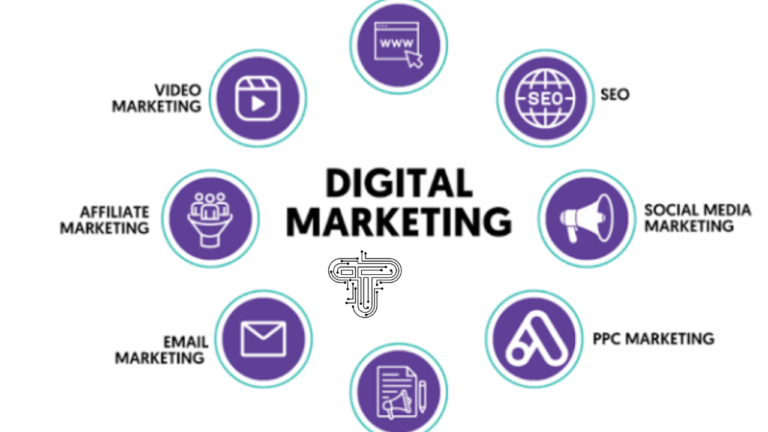Maximising Sales with Back-End Marketing: How Data, Email, and Analytics Drive Front-End Success
Back-end marketing requires a technical approach that you may not have considered exploring. However, the efforts made behind the scenes with methods like email marketing and loyalty schemes can have an enormous positive impact on the consumer-driven front-end sales. Don’t panic, though, as it can be relatively easy to maximise sales through some creative changes made by the marketing team. If you are interested, here’s a quick rundown of some methods.
Search Engine Optimisation
One of the less obvious but more powerful business investments today is search engine optimisation. As an overlooked tool, you can gain a strong competitive advantage just by leveraging basic SEO, such as keyword research. However, there is much more to SEO than that, and working with an agency for link building, you can skyrocket incoming web traffic. As your domain authority grows, so too does the potential for higher CTR and high-quality leads.
Back-End Marketing with Email
According to Litmus, the ROI of an email campaign is between $10 and $36 for every $1 spent. This means email marketing is far from dead, and any business would be remiss not to use it as part of a broader campaign. Included with this are some strategies with excellent results:
- Segmented email marketing campaigns can be targeted towards specific customer lists.
- With high open rates, a successful campaign can be built upon with upselling methods.
- If a customer hasn’t engaged for a while, craft automated emails that offer exclusives.
Buyer Personas from Insights
With so much data available, it is a waste to ignore it. Collecting data can be as easy as exporting from Google Analytics. Even something like bounce rate indicates user behaviour. Any data a company can gather can be used in many creative ways. In terms of increasing sales, you can build customer personas and profiles to make it easier to advertise and craft a personalised experience. Further, this data can also be used to attract new customers.
Implementing Predictive Analytics
Artificial intelligence can be a massive advantage when using various types of data. By feeding GPTs with specific data, they can analyse data and provide actionable insights for implementing core marketing strategies. One of the most powerful is predictive analytics. A simple example is analysing purchase patterns to predict when a customer will need a product replacement, such as skin cream. This can then be extended by offering a subscription discount to the consumer.
A/B Testing Back-End Marketing
A report by 99Firms found that 77% of companies actively run A/B testing at any given time. A/B testing is a critical strategy that you can use to refine tactics based on feedback and other valuable metrics. However, success with your analytics relies on crafting a well-defined test.
Define the goals of the test
Define the measurable metrics and KPIs that you want to extract data about, such as CTR and conversion. Then hypothesise the changes, such as changing the colour of a CTA button.
Craft variations for testing
Identify elements for change, keeping it simple to avoid confusion. Testing one theory at a time is recommended, and you can use A/B testing tools like VWO for code-free modification.
Run the test and analyse results
Running the test depends on splitting website traffic into two groups, with one seeing the original and another the modified site. Gather data such as CTR and bounce rate to declare a winner.
A/B testing relies on crafting separate versions of the same website for different user segments. To keep it simple, it is best to change and test one thing at a time to see what works best. There are tools available for testing live variations of a given website with minimal coding efforts.
Post-Purchase Incentives
Selling products isn’t easy. However, there are tried and tested methods that successful businesses use to squeeze more from a consumer. One of the most effective is upselling, followed by cross-selling. These are best utilised with customers most likely to purchase a specific product or brand after the initial purchase. Examples include limited-time one-click upsells on a thank-you email, which is powerful because the customer is already committed.
Increasing Average Order Value
Alongside upselling, a business can also increase the sales potential from a single customer by increasing the average order value. After a satisfactory purchase, customers are more likely to commit to a good offer if they feel they are getting value for money. This includes adding items to a bundle that saves the customer money in the bigger scheme of things. While it is a better offer for the customer, it also drives your profit margins a little bit further for higher revenue.
Loyalty through Back-End Marketing
Zendesk conducted a study in 2023 and found that 72% of customers feel strong loyalty towards at least one brand they love. You can reward loyalty to help customers feel more valued and appreciated, but more importantly, to keep them coming back for more business:
- Points systems are among the most popular and easiest loyalty schemes to implement.
- Various tiers of membership, such as VIP, can help improve engagement metrics.
- Subscription makes it easier for customers and provides a steady income stream.
The Feedback and Support Loop
If there’s one thing a customer will remember, it is exceptional customer service. Throughout every step of the journey, a customer’s needs must be met to the highest degree possible. If there is even one misstep, it could end up in cart abandonment. To find out customer pain points, conduct regular feedback and survey sessions. After these, don’t ignore the data gathered. Instead, use it to implement new services, refine processes and improve the journey.
Tech Blaster
Summary
Search engine optimisation (SEO) is a robust back-end marketing tool that many businesses actually overlook. Alongside marketing methods like A/B testing, SEO can boost sales. However, it would be foolish to ignore data from feedback by not using it to craft a better service. After all, customers are much more likely to remember the service, good or bad, more than the products. As such, every decision must factor in how customers will be impacted.







